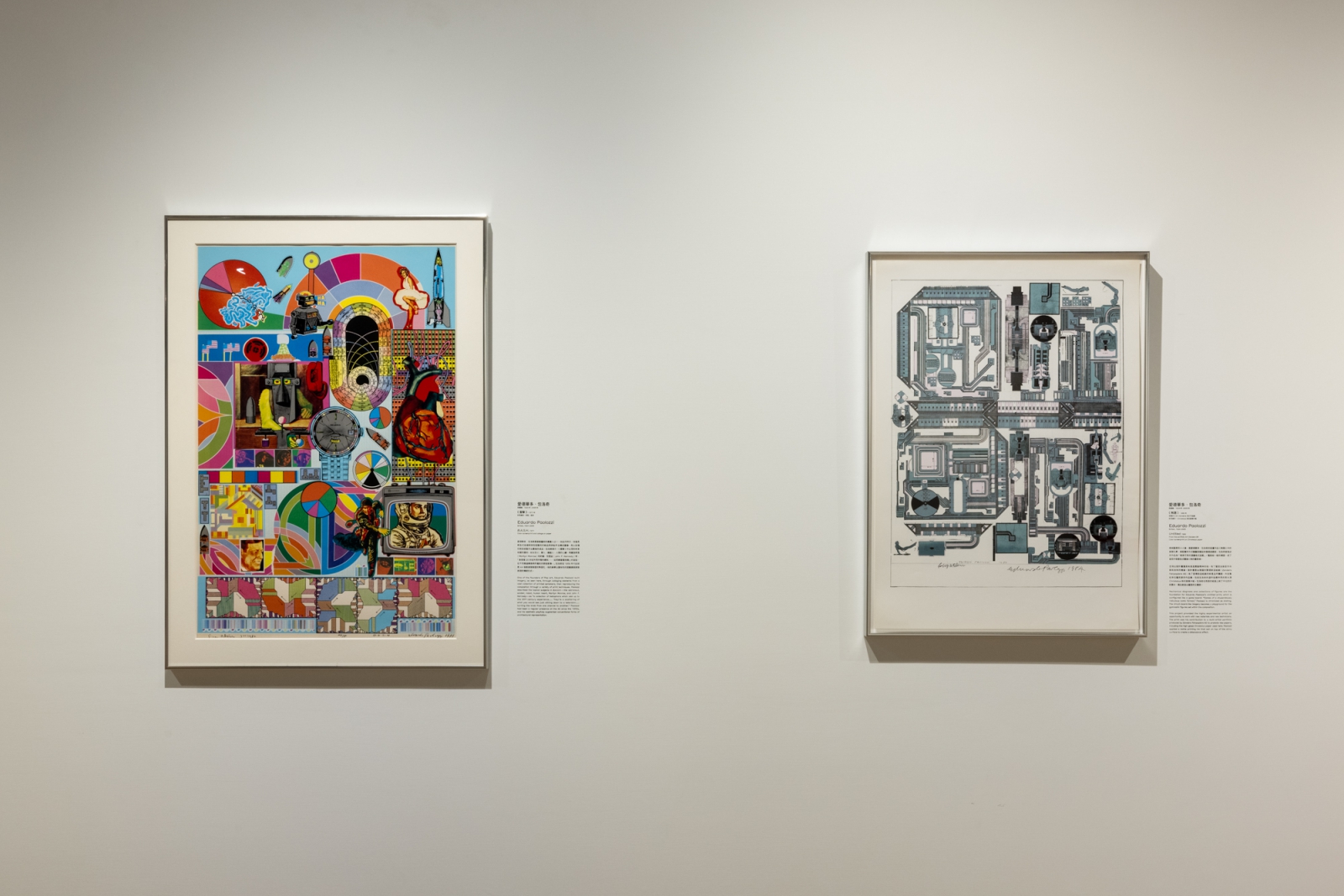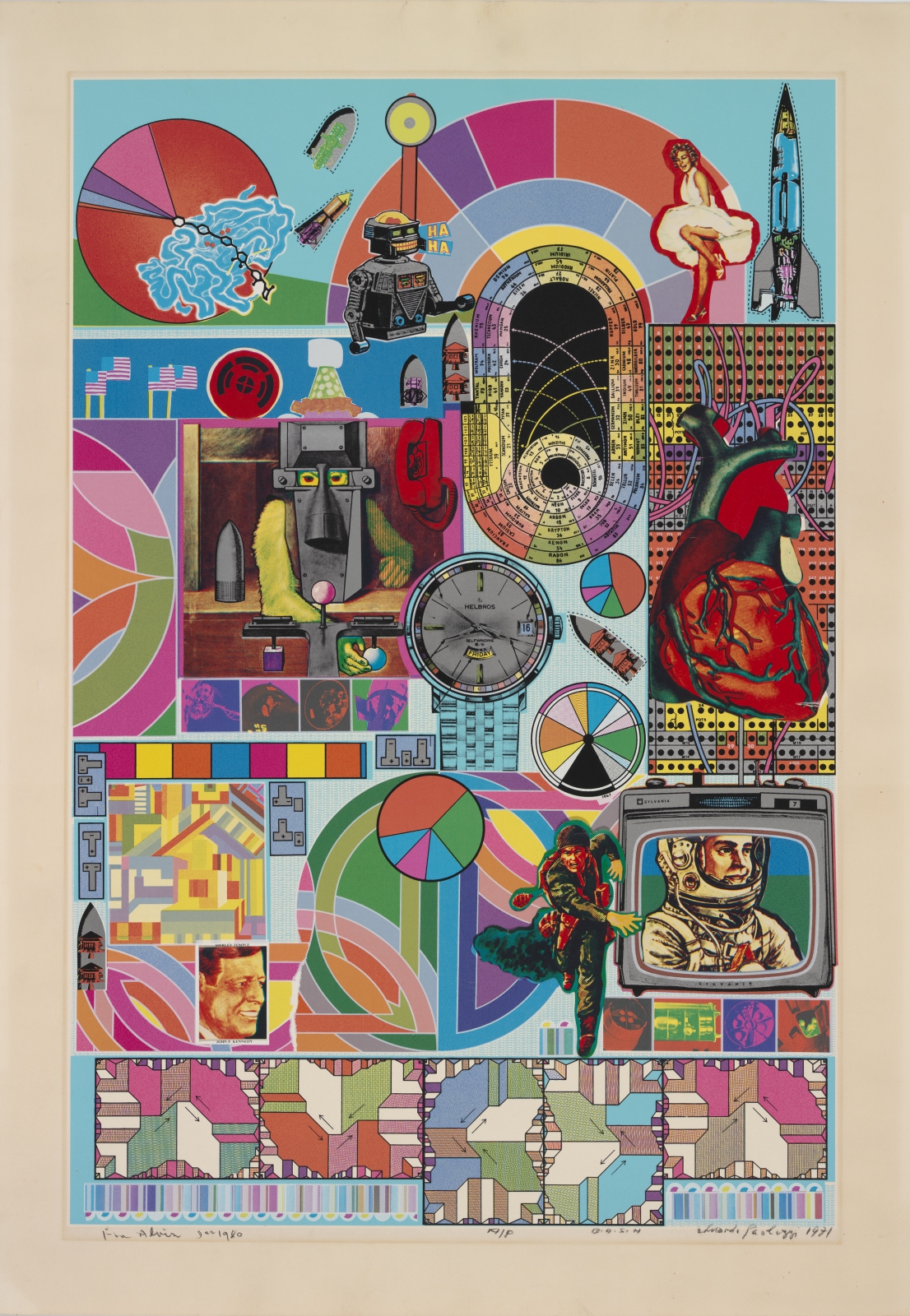
圖:《聚變:AA倫敦建築聯盟的前銳時代》展場,為Eduardo Paolozzi展出作品
|
愛德華多.包洛奇 《無題》,1980年 |
Eduardo Paolozzi Untitled, 1980 |
機械圖表和小人像,是愛德華多.包洛奇的版畫作品《無題》中的基礎元素,其配置的方式讓畫面看起來像個遊戲板;包洛奇曾描述其作品為「極其可笑的漫畫格式遊戲」。電路板一般的構圖,成了畫面中做著各式體操人物的體育場。
這項出版計畫讓具有高度實驗精神的他,有了嘗試全新創作材質和技術的機會。該計畫是由德國的贊德斯造紙廠(Zanders Feinpapiere AG)為了宣傳該造紙廠的新產品所籌劃,內容集結多位藝術家的作品集,包括包洛奇的這件版畫所用的高光澤Chromolux珠光玻璃卡紙。包洛奇在亮面的紙張上刷了平光的印刷墨水,藉此創造出畫面的立體感。
Mechanical diagrams and collections of figures are the foundation for Eduardo Paolozzi’s Untitled print, which is configured like a game board: “Games of a stupendously ridiculous comic format,” Paolozzi is chronicled as stating. The circuit-board-like imagery becomes a playground for the gymnastic figures set within the composition.
This project provided the highly experimental artist an opportunity to work with new materials and new technicians. The print was his contribution to a multi-artist portfolio produced by Zanders Feinpapiere AG to promote new papers, including the high-gloss Chromolux paper used here. Paolozzi applied a matte printing ink that sat on top of the shiny surface to create a dimensional effect.

Eduardo Paolozzi, B.A.S.H., 1971. © Eduardo Paolozzi. From the Collection of the Alvin Boyarsky Archive.
|
愛德華多.包洛奇 《重擊》,1971年 |
Eduardo Paolozzi B.A.S.H., 1971 |
愛德華多.包洛奇是普普藝術的奠基人之一。如此作所示,他擅長將各式各樣時效性短暫的印刷品用拼貼手法構成圖像,再以各種印刷技術製作出最後的成品。包洛奇表示,《重擊》中出現和時事有關的題材,如太空人、軍人、機器人、人類的心臟、瑪麗蓮夢露(Marilyn Monroe)和約翰.甘迺迪(John F. Kennedy)等,「象徵著20世紀所見所聞的總和……如同轉著電視機上的旋鈕,在不同頻道轉換時所看到的那些影像。」包洛奇從1950年代起就是AA倫敦建築聯盟的熟面孔,他的美學以趣味性的語彙擴展建築表現的傳統形式。
One of the founders of Pop art, Eduardo Paolozzi built imagery, as seen here, through collaging elements from a vast collection of printed ephemera, then reproducing the composition through a variety of print techniques. Paolozzi described the topical subjects in B.A.S.H.—the astronaut, soldier, robot, human heart, Marilyn Monroe, and John F. Kennedy—as “a collection of metaphors which add up to the 20th-century experience…… They’re a scattering of what you would see just sitting down to a television…… turning the knob from one channel to another.” Paolozzi had been a regular presence at the AA since the 1950s, and his aesthetic playfully augmented conventional forms of architectural representation.
